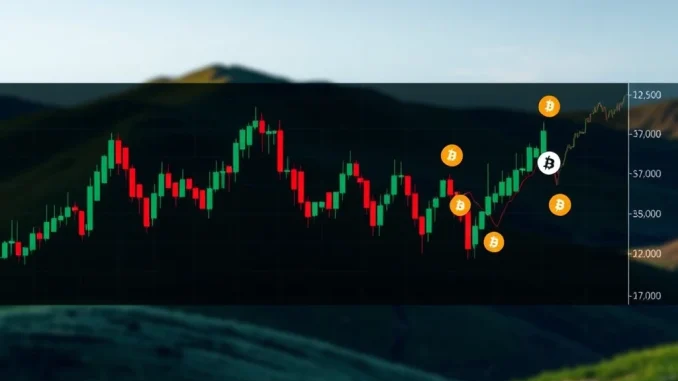
Hey crypto traders! Ever wonder what the collective mood of the market is? One powerful way to gauge sentiment is by looking at the **BTC perpetual futures** long-short ratio. This metric gives us a snapshot of how traders on major exchanges are positioned – are they betting on price increases (longs) or decreases (shorts)? Let’s dive into the latest **BTC market data** from the past 24 hours.
Understanding the Long-Short Ratio for BTC Perpetual Futures
Before we look at the numbers, let’s quickly clarify what the **long-short ratio** actually is. Simply put, it’s the ratio of the number of long positions to the number of short positions open on a perpetual futures contract. A ratio above 1 means there are more long positions than short positions, suggesting bullish sentiment. A ratio below 1 indicates more short positions, hinting at bearish sentiment. For **BTC perpetual futures**, this ratio is a key indicator watched by many.
Analyzing the Latest BTC Market Data
Here’s the breakdown of the **BTC market data** for perpetual futures over the last 24 hours:
- Total Market: Long 49.21% | Short 50.79%
This overall number shows a slight edge for short positions across the board.
Looking at Top Exchanges:
Let’s see if the sentiment holds true on some of the largest platforms for **crypto futures** trading:
- Binance: Long 48.93% | Short 51.07%
- Bybit: Long 48.38% | Short 51.62%
- Gate.io: Long 48.87% | Short 51.13%
As you can see, the top three exchanges listed mirror the total market sentiment, with slightly more traders positioned short than long on **BTC perpetual futures**.
What the Long-Short Ratio Tells Us About Bitcoin Trading Sentiment
The fact that the short percentage is slightly higher than the long percentage (50.79% vs 49.21% total) suggests a marginally bearish **Bitcoin trading sentiment** among perpetual futures traders over the past day. While the difference isn’t massive, it indicates that slightly more capital is currently being allocated to bets on Bitcoin’s price going down compared to it going up in the perpetual futures market.
It’s important to remember this is a snapshot over 24 hours and the **long-short ratio** can change rapidly. However, seeing consistent slightly bearish sentiment across major platforms like Binance, Bybit, and Gate.io adds a bit more weight to the observation.
Insights for Crypto Futures Traders
So, how can **crypto futures** traders use this information? The **long-short ratio** is often used as a sentiment indicator, but it’s rarely used in isolation. Some traders view an extreme ratio (either heavily skewed long or short) as a potential contrarian signal, anticipating a move against the dominant position due to potential liquidations (a ‘short squeeze’ if longs are few, or a ‘long squeeze’ if shorts are few).
In this specific case, with the ratio close to 50/50 but slightly favoring shorts, it doesn’t scream ‘extreme’. It suggests a market where participants are relatively balanced but with a slight lean towards caution or expecting a minor downturn. Traders might use this data alongside other technical and fundamental analysis to confirm or question their own biases. For example, if you are bullish based on a chart pattern, a slightly bearish **long-short ratio** might make you pause or reduce position size.
Putting it Together: Using Long-Short Data for Better Trading
Monitoring **BTC market data**, including the **long-short ratio**, provides valuable insight into the collective positioning of traders in the **BTC perpetual futures** market. While the current data shows a slight lean towards short positions, indicating cautious or mildly bearish **Bitcoin trading sentiment**, it’s just one piece of the puzzle. Successful trading involves combining sentiment data with price action, volume, and other indicators to make informed decisions in the dynamic world of **crypto futures**.
Keep an eye on how this ratio evolves, especially during periods of significant price movement, as shifts can sometimes precede or accompany larger trends.



